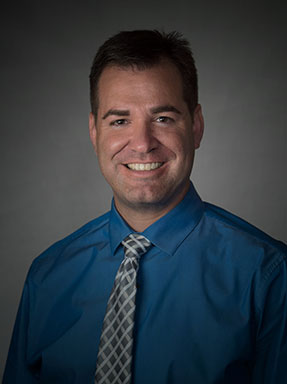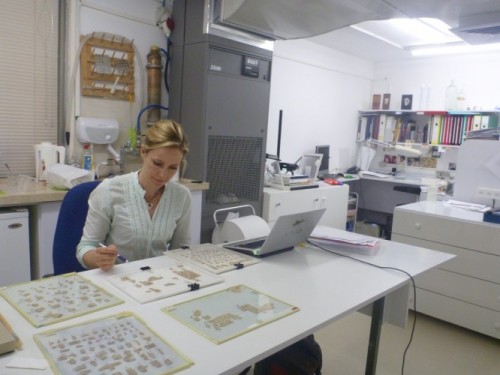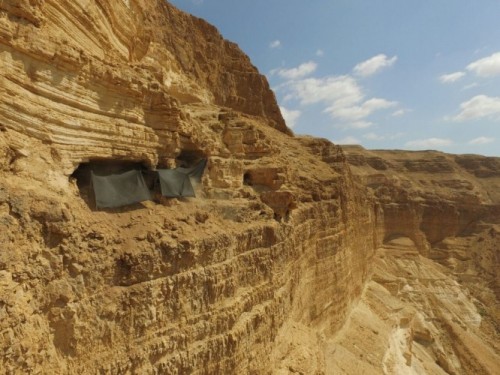Alison Schofield Tackles New Translation of the Dead Sea Scrolls
DU professor is one of three editors on an international project
Alison Schofield is truly living her childhood dream. An associate professor of religious and Judaic studies, she works with some of the most intriguing ancient manuscripts in Judaism and Christianity.
“I was always a fan of Indiana Jones, and I was always interested in the Middle East,” Schofield says. “I’ve been interested in the Dead Sea Scrolls for as long as I can remember.”
That interest has paid off. Today, she is part of a three-editor team working to create a new translation of the famous scrolls. “My field tends to be male-dominated,” Schofield says. “For the first time in history a woman has been selected to one of the highest roles of editing, and also being an American, because generally it has been European scholars.”
Her interest in the scrolls started when she was growing up. While in high school, she attended her first conference on the texts. And when she pursued her college education, she focused on the Middle East, the Hebrew Bible, archaeology, and of course, the Dead Sea Scrolls.
The discovery of the scrolls is considered one of the most significant archaeological finds of the 20th century. The Dead Sea Scrolls contain some of the oldest copies of the Bible and Jewish literature dating to the time of the Second Temple in Jerusalem. They were first discovered in mountain caves east of Jerusalem in 1947. However, discoveries continue to be made even today as archaeologists search 12 different caves overlooking the Dead Sea. Many of the scrolls are on display today at the Israel Museum in Jerusalem.
Schofield has been traveling to Israel for more than 20 years, and for the last 10 years she has worked directly with the manuscripts. As the technology to sense and decipher the scrolls improves, new fragments are unearthed throughout the caves. Two years ago, Schofield was named to the editorial team tasked with producing new critical editions of the prized works. These will feature translations of newly discovered fragments and improved reconstructions of previously published texts.
Schofield joins Daniel Falk of Penn State University and retired professor Martin Abegg Jr. of Trinity Western University in piecing together the fragments, creating a translation and providing textual notes and commentary to help readers make sense of all the different copies of the scrolls.
In the summer of 2016, Schofield was part of a team excavating new fragments of the scrolls. It was the first major excavation of the area for the Dead Sea Scrolls since the initial discovery in the 1940s.
“That was really an adventure for me,” she says. “It was very surreal in the sense that the setting itself was very dramatic. If you are in the cave, you are hanging over a nearly thousand-foot cliff. It is incredibly exciting and dangerous to be repelling into a cave and to work on the archaeological dig harnessed the entire time.”
Schofield’s work is especially significant in light of the recent discovery of new scroll fragments. By pairing the old and new scrolls, researchers are able to look at a more comprehensive manuscript, which helps greatly when interpreting their meaning.
“Every day I wake up thinking, ‘I’m really just amazed that I have this opportunity to work with these scrolls that were written by so many hands 2,000 years ago,’” Schofield says. “The scrolls tell us so much about not only the origins of Judaism, but then the branching off of Christianity. To have that opportunity to hear those ancient voices and to be able to share those ancient voices with people is a great opportunity.”





